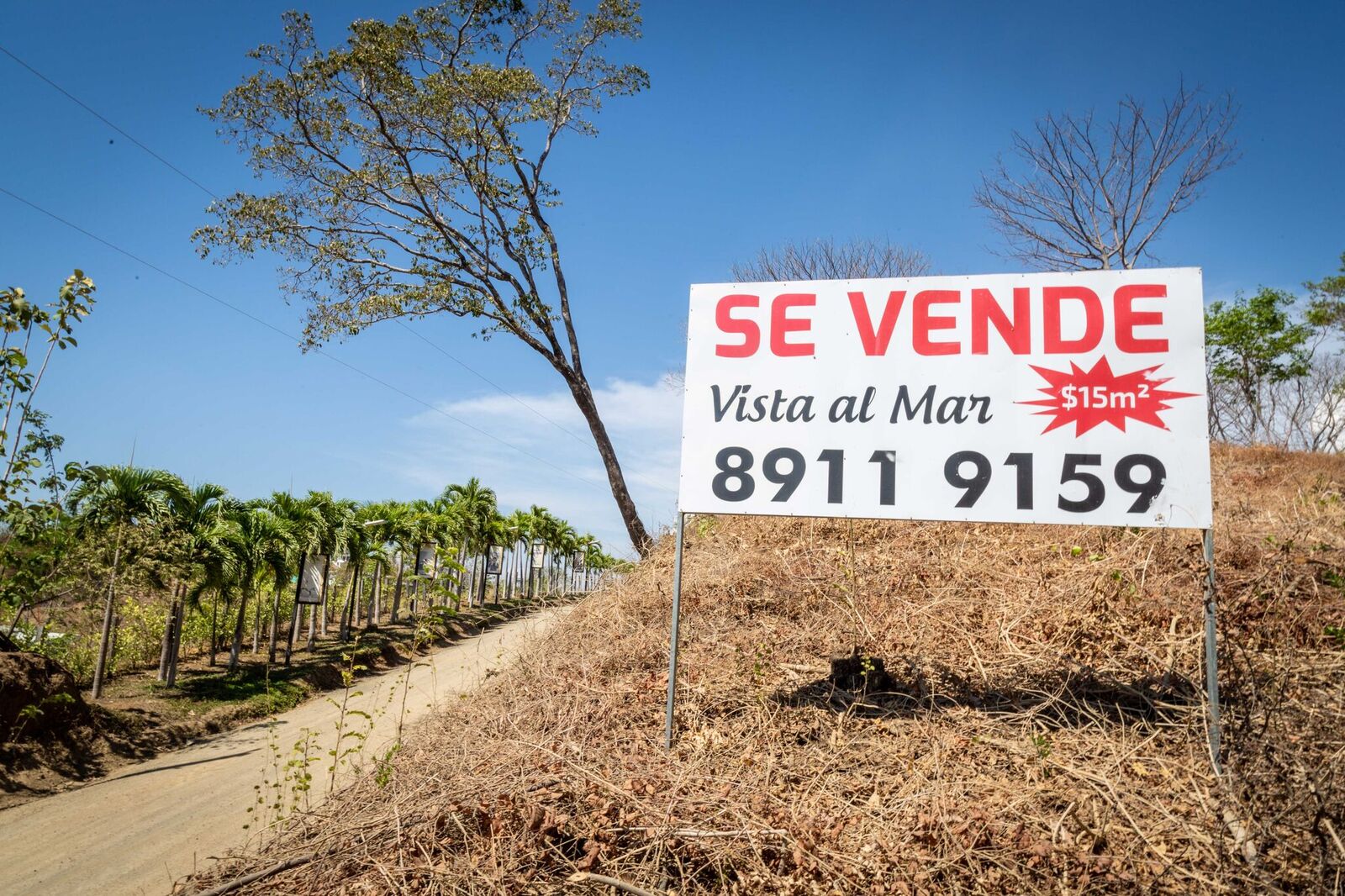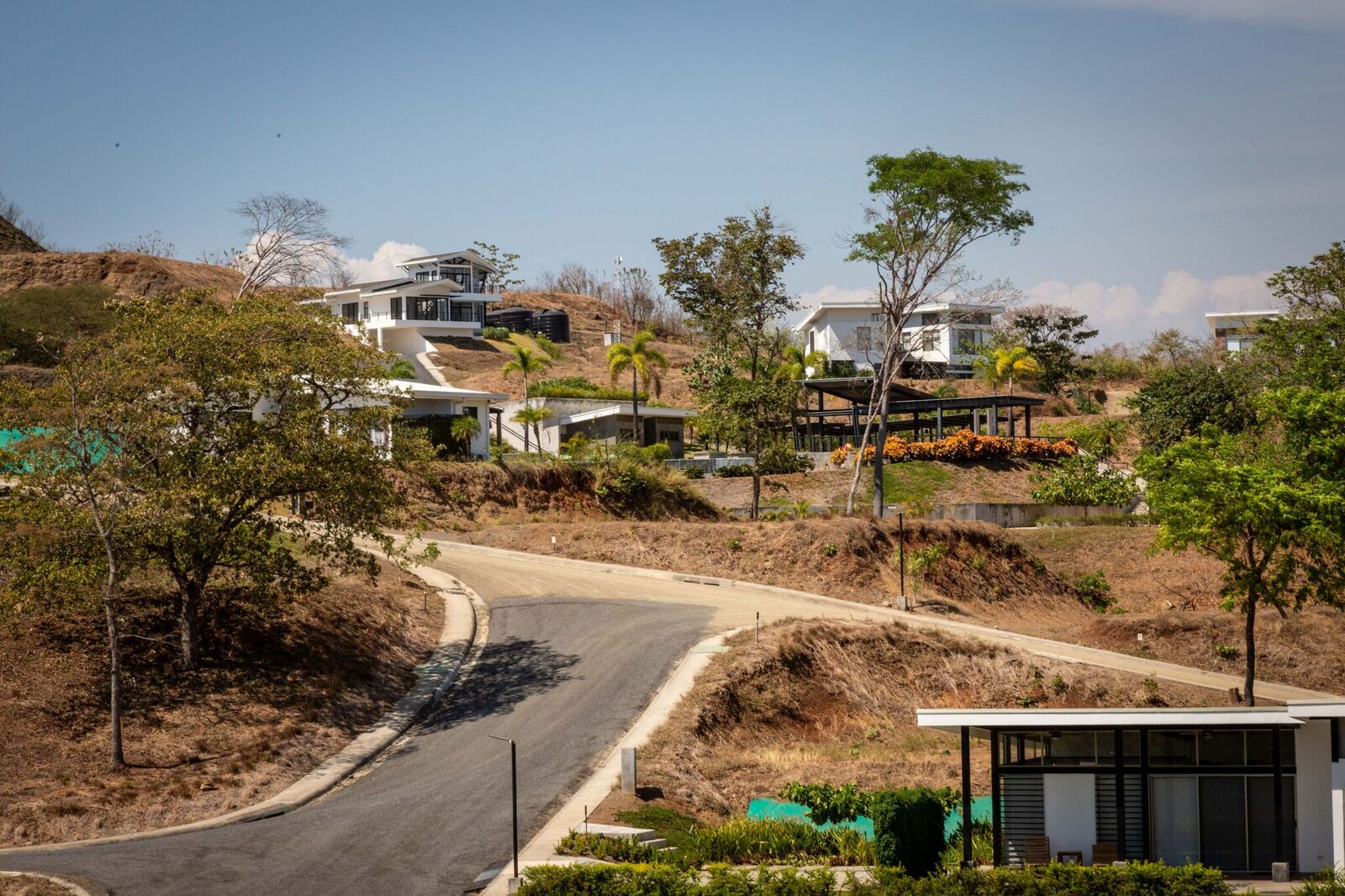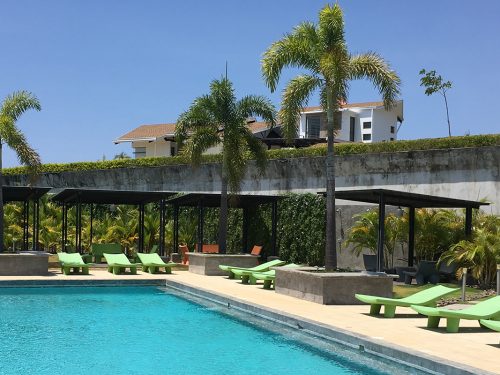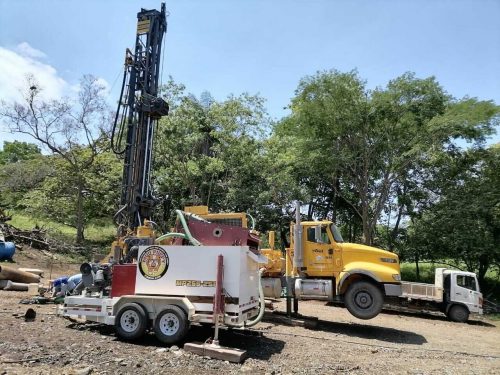
A new study by the Costa Rican Institute of Aqueducts and Sewers (AyA) confirms that the coastal community of Marbella, in Santa Cruz, does have water to continue developing but still needs to find sites to drill more wells so that it is sustainable to allow new constructions.
The study indicates that Marbella can grant 1,200 new services. One service is the equivalent of a water line for a house. In the case of real estate developments or hotels, the number of services needed depends on the amount of water they are going to consume.
This study is just to have that hydrogeological knowledge and to know how much growth we can allow to not be impacted,” said AyA executive president Yamileth Astorga in an interview with The Voice of Guanacaste.
Marbella is located in Cuajiniquil, a district with high growth potential but a lot of irregularities. While one part of the community is concerned about exploiting the aquifers, another part is pressuring to promote even more real estate construction.
In fact, in February of 2019, the institute had to take control of two illegal wells that were previously administered by the Posada del Sol and the Marbella ASADA water boards.
For now, AyA is not giving permits for hotel and real estate developments but also claims that it is not “slowing down the development” of the area because it has not received new requests. The institute’s plan is to find a place to open a new well by February 24.
“After that date, the final drilling process would begin there. If it is determined that the property indicated fulfills what is necessary, negotiations with the owner are initiated for the purchase of all or part of the land,” stated the director of peripheral systems drinking water, Rafael Barboza.
According to the people interviewed, the situation that Marbella is going through is not unique. Rather, it reflects a series of factors that could also be present in other coastal territories of Guanacaste, for example the exploitation of wells without permits and the vulnerability of aquifers to salinization.
The following is an excerpt from the interview with Astorga, in which the assistant manager of peripheral systems, Natalie Montiel, and the director of peripheral systems drinking water, Rafael Barboza, also participated:
– In the Marbella study, the following is concluded: “the aquifer is able to supply the required water without causing any impact.” Can we conclude that there is water for Marbella?
The aquifer has capacity from the water point of view, but what needs to be looked for are the wells to extract the amount recommended in the hydrogeological study (21.9 liters per second).
– There is water, but with restrictions?
Yes there is water, but it depends on the growth area of Marbella. What is being exploited today, which is only the Posada del Sol well, produces 4 liters per second, although the aquifer has capacity to exploit more. Of those 4, there are about 271 services currently, and that is where the capacity for growth is limited with current conditions.
– Specifically, what is the institution doing to look for these new sources of water? More studies?
The hydrogeological study mentions the possible areas where there is still availability of exploitation without putting the aquifer at risk. It is with this information that AyA was given the task of looking for possible sources.
The partners in the region have been contacting property owners in these areas to make timely evaluations to determine where there is the owner’s consent to exploit and whether or not there are possibilities of finding water. Then an exploratory well is made to verify it.
– How long can this exploration process take?
We have already projected that we will have identified the site where one of the wells could be drilled by February 24. After this date, the final drilling process would begin and negotiations start with the owner for the purchase.
– So can anyone who wants to request water availability at this time to build in Marbella do it?
Yes, but the permits that we are giving are only for vegetative growth, that is, only for housing.
– Does that mean that there is a limitation for large developments?
Let’s see, a project can and does have the right to request water availability, but at this moment we are not granting them for large developments because we have a limitation on the current flow.
– If a request from a developer arrives, would it be put on hold?
Yes, but we also want to clarify that we have not received any requests for real estate developments in the area. We are preparing to have sufficient water capacity to be able to face future developments.
– If we had all the infrastructure developed, how long does the water in Marbella reach?
We can’t make that projection until we have defined the water source that we are going to use. How much a source of water can give is going to depend on how much you extract. Since we already have knowledge of the groundwater, the important thing is not to overexploit it.

Near Marbella´s beach, finding these signs offering lots in real estate developments is common.
– How do you not overexploit it?
We have the advantage that AyA already assumed [control of] the supply systems that were in the area, which gives a guarantee that resources are not being overexploited. The hydrogeological study also says that, given the vulnerability of the system, only AyA can take advantage of and be given new concessions. That is to say, for new applications for wells, [the Ministry of Environment and Energy] will only give permits to AyA for human consumption. We are the only ones exploiting it.
– Are you taking into account the worst climate change projections? Because the water that there is right now is one thing and what there might be in the future is another.
We are beginning to include climate change as a variable within a water safety plan, which is a strategy to make a risk assessment of our systems.
– What happened to the wells that used to be managed by the Posada del Sol ASADA and the Marbella ASADA and which are now the domain of AyA?
We initiated a work plan with the representative of these condominiums. The representative [of the condos] followed through up until a certain moment, but he stopped attending in the following stages, where he had to transfer all that infrastructure to AyA to be able to provide the service. [Now] there are legal actions that are still in the process of resolution.
– Are those condos still receiving water? How much water do they consume from the community total?
They currently have an auto-consumption. They have an individualized well that is inside the Lomas del Sol condominium and they are supplied from that source, but AyA is regularizing this because we are now a service provider within the area.
– For AyA, is Marbella a particular situation (a phenomenon in the province) or is it something that is being repeated at many beaches along the Guanacaste coast?
In Marbella, we see a coastal community without regularization in some of its wells and a vulnerability to salinization. In coastal systems, we have all of these conditions: risk of overexploitation of wells because we do not have hydrogeological studies for 100% of the places and there are also wells without permits. So yes, it’s not just Marbella.







Comments